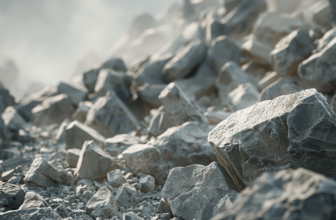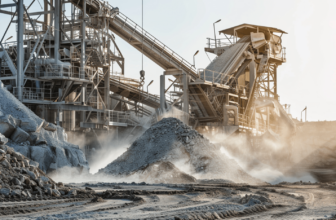Gravel, often perceived as an inconspicuous part of our environment, plays a crucial role in shaping our everyday landscapes and infrastructures. It graces our gardens, forms our driveways, and even structures our playgrounds. The world of gravel is surprisingly diverse, each type with its unique properties and applications.
This comprehensive guide delves into understanding the various gravel types, comparing their physical attributes, durability, costs, and environmental impacts. We will also explore the specific uses of different gravel types and provide insights on how to choose the right one for your needs. Additionally, you’ll receive practical tips for preparing, installing, and maintaining different gravel types. Whether you are a homeowner, a DIY enthusiast, a builder, or just curious, this article will enlighten you about the fascinating world of gravel.
Overview of Gravel Types
Gravel constitutes an integral part of many construction and landscaping projects. Comprising a variety of rocks, sizes, and colors, the uses of gravel are equally diverse. In this section, we will examine several gravel types and their characteristics.
Pea Gravel
Named for its resemblance to peas, this type of gravel features small, rounded stones often used in landscaping and playgrounds. The rocks are generally 1/8″ to 3/8″ in diameter and come in a variety of colors.
Crushed Stone Gravel
This type of gravel is made by crushing large rocks in a machine. Crushed stone gravel is characterized by its angular shape, making it ideal for drainage and traction in icy conditions. Its sharp edges can make it less comfortable for bare feet or paws.
River Rock
River rocks are naturally occurring stones shaped by river currents over time. They are larger than pea gravel, round and smooth, and are typically used for decorative landscaping or creating natural-looking dry river beds in yards.
Decomposed Granite
Decomposed granite is formed from solid granite rocks’ natural weathering and erosion. It is often used in patios, paths, and driveways due to its compactness and stability when properly installed.
Marble Chips
These are small pieces of marble with a spectacular white sparkle. They are popular for mulch replacement and decorative landscaping due to their stunning aesthetic appeal.
Lava Rock
Lava rocks are volcanic rocks that are lightweight and porous. They are often used in gardening because they retain moisture and insulate plant roots.
Comparing Different Gravel Types
Physical and Aesthetic Differences
Each type of gravel has a distinct physical characteristic and aesthetic appeal. Pea gravel is soft and smooth, while crushed stone gravel is sharp and angular. River rock offers a natural look, decomposed granite has a rustic feel, marble chips lend a glamorous touch, and lava rocks bring a unique, bold statement.
Varying Levels of Durability
Different gravel types have varying levels of durability. Crushed stone and decomposed granite tend to be more durable and less likely to be displaced than pea gravel or river rock. While beautiful, lava rock and marble chips may not effectively stand up to high-traffic areas.
Differences in Cost
Costs can significantly vary depending on the gravel type. Pea gravel and decomposed granite are typically more affordable, while river rock, marble chips, and lava rocks tend to be on the higher end of the price spectrum.
Environmental Impact of Various Gravel Types
The environmental impact of each gravel type is primarily influenced by its sourcing and transportation. Locally sourced materials like crushed stone gravel usually have a lower carbon footprint than imported materials like marble chips.
Understanding the Uses of Different Gravel Types
Uses in Landscaping
In landscaping, gravel types like pea gravel and river rock are often used for paths or as a ground cover. Lava rock and marble chips are popular choices for mulch in flower beds due to their unique colors and heat retention properties.
Uses in Construction
Crushed stone gravel and decomposed granite are commonly used in construction for foundations, roads, and driveways due to their durability and stability.
Decorative Purposes
Marble chips, river rock, and lava rock are often chosen for their aesthetic appeal in decorative applications, such as accenting flower beds or creating visually interesting pathways.
Utility and Functional Uses
Pea gravel is ideal for playgrounds due to its softness, while crushed stone gravel is perfect for traction on icy driveways.
How to Choose the Right Gravel Type
Determining Your Needs
Consider the project at hand. If you need a decorative touch, consider marble chips or river rock. For a driveway, crushed stone gravel or decomposed granite would be ideal.
Cost Considerations
Factor in your budget. Pea gravel and decomposed granite are more affordable options, while marble chips and river rock are more expensive.
Maintenance Factors
Consider the maintenance involved. Due to their durability, crushed stone gravel and decomposed granite require less maintenance than other types of gravel.
Environment and Sustainability Factors
Think about the environmental impact. Locally sourced gravel types have less carbon footprint than those imported from farther away.
Practical Tips for Using Gravel
Preparation and Installation
Preparation and installation of gravel are crucial steps to ensure its longevity and effectiveness in its intended use. Before any gravel is laid, the ground should be cleared of any weeds or plant material. Installing a layer of landscaping fabric is highly recommended to hinder weed growth and prevent the gravel from sinking into the soil over time.
Next, the area should be leveled to ensure proper drainage. A slight slope can help direct rainwater away from structures and prevent pooling. Once the base is prepared, a border or edging can be installed to contain the gravel, especially for decorative or pathway uses.
Finally, the gravel can be laid in layers for compact types like decomposed granite or crushed stone. This helps to create a firm, stable surface. The depth of the gravel layer will depend on its use; typically, a 2-3 inch layer suffices for most landscaping uses, while driveways may require up to 4-6 inches. Remember, the key to successful gravel installation is careful preparation.
Maintenance Tips for Different Gravel Types
Maintaining your gravel ensures it continues to serve its purpose effectively and remains aesthetically pleasing. Regularly raking gravel areas can help maintain a level surface and keep it neat. Raking also redistributes displaced material, especially for loose gravel types like pea gravel or marble chips.
For driveways or pathways made of crushed stone or decomposed granite, periodic topping up is necessary to replace material displaced by traffic or weathering. Regular washing can maintain their vibrant color and luster for decorative gravel like marble chips or lava rocks.
Lastly, keep an eye out for weed growth. Even with landscape fabric, occasional weeds may sprout. Prompt removal will prevent them from spreading. Following these maintenance tips can keep your gravel looking fresh and performing well for years.







